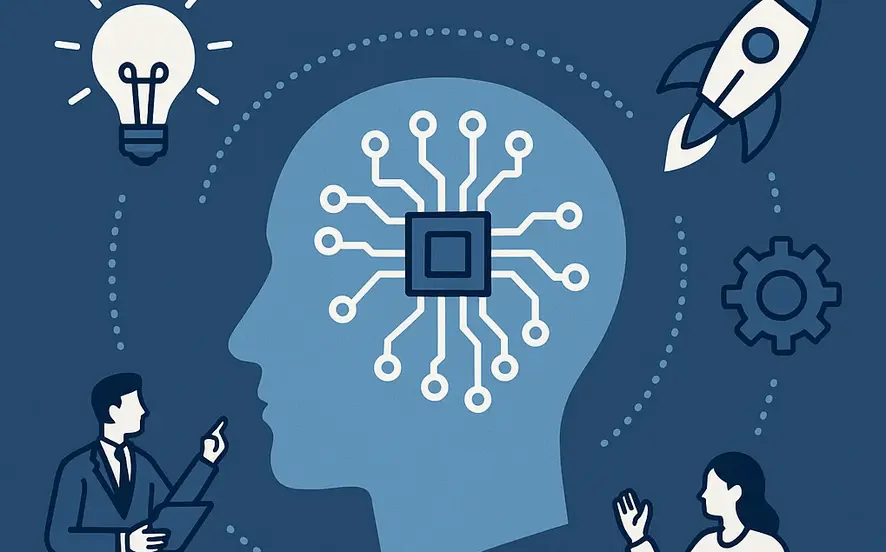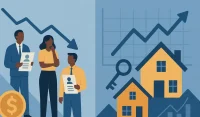The AI Creativity Revolution: Transforming Workplace Innovation
The AI creativity revolution is fundamentally reshaping how we approach innovation and problem-solving in the modern workplace. What was once the exclusive domain of technical experts has now become accessible to every professional, regardless of their technical background. This transformation represents more than just a technological advancement—it’s a complete paradigm shift in how we think about creativity, collaboration, and human potential.
The story begins with a simple yet profound observation about human innovation. Throughout history, breakthrough ideas have consistently emerged during moments of relaxation and reflection. Winston Churchill famously dictated his national addresses while sitting in his bathtub, demonstrating how the mind works best when freed from the constraints of formal work environments. Today, thanks to the AI creativity revolution, even the most ordinary professional can access the kind of assistance that was once reserved for world leaders.
The Democratization of Creative Assistance
The AI creativity revolution has leveled the playing field in unprecedented ways. Where once only powerful figures like Winston Churchill could afford personal assistants who understood their context, voice, and intent, now every professional can access similar capabilities through artificial intelligence. This democratization represents one of the most significant shifts in workplace productivity since the invention of the personal computer.
Consider the case of Adam Rymer, a facilities manager at Glen Canyon National Park. Faced with the tedious task of filling out paperwork for carpet tile replacement—a process that typically consumed two to three days—Rymer discovered how the AI creativity revolution could transform his workflow. In just 45 minutes, he built a natural language tool that automated this process, saving himself days of work on every project.
The impact didn’t stop there. When other parks learned about Rymer’s innovation, the tool spread across the National Park Service’s 430 locations. The service now estimates that this single AI-powered solution will save 7,000 days of human labor annually. This example perfectly illustrates how the AI creativity revolution enables ordinary professionals to create extraordinary impact without any technical expertise.
Rethinking AI Collaboration: From Tool to Teammate
The key to unlocking the full potential of the AI creativity revolution lies in how we approach our relationship with artificial intelligence. Research reveals a fascinating paradox: while AI can make people 25% faster, 12% more productive, and 40% better in quality, less than 10% of working professionals are actually achieving meaningful productivity gains from AI collaboration.
This gap, which I call the “realization gap,” stems from a fundamental misunderstanding of how to work with AI. The most successful AI collaborators don’t treat artificial intelligence as a tool—they treat it as a teammate. This shift in perspective changes everything about the outcomes you can achieve.
When you view AI as a tool, mediocre results lead to frustration or abandonment. But when you treat AI as a teammate, you naturally respond with coaching, feedback, and mentorship. You ask questions like, “What do you need to know from me to provide a better response?” or “What are ten questions I should be asking about this problem?”
This teammate approach opens up entirely new possibilities. For instance, when preparing for a difficult conversation with a coworker, you can leverage AI to role-play the interaction. The AI can interview you about your conversation partner, construct a psychological profile, and then simulate the conversation while providing feedback from your colleague’s perspective. This level of preparation and insight was simply impossible before the AI creativity revolution.
The Power of Asking AI to Ask You
One of the most counterintuitive yet powerful aspects of the AI creativity revolution is the concept of letting AI guide the questioning process. Unlike traditional software tools, AI has the unique ability to teach you how to use itself more effectively. This capability opens up entirely new approaches to problem-solving.
Instead of asking AI directly for solutions, you can ask it to help you formulate better questions. For example, rather than asking “How should I answer this question?” you can ask “What’s the best way to frame this question to get the most helpful response from AI?” This meta-level thinking often leads to more insightful and productive outcomes.
The most effective approach involves treating AI as a consultant. You can say, “Hey, you’re an AI expert. I would love your help in figuring out where I can best leverage AI in my life. As an AI expert, would you please ask me questions one at a time until you have enough context about my workflows, responsibilities, KPIs, and objectives that you could make two obvious recommendations and two non-obvious recommendations for how I could leverage AI in my work?”
Looking to Hire Fast?
Hiring managers can now post jobs for free on WhatJobs and connect with millions of jobseekers.
👉 Post a Job Now →This approach typically results in one of the most enlightening conversations you’ll ever have, all because of AI’s ability to evaluate its own work and guide the discovery process. The AI creativity revolution isn’t just about getting answers—it’s about learning to ask better questions.
Beyond “Good Enough”: The Creative Imperative
The AI creativity revolution has made it easier than ever to achieve “good enough” results. However, true creativity requires pushing beyond this baseline. A seventh-grader in Ohio captured this perfectly when she defined creativity as “doing more than the first thing you think of.” This simple definition speaks to a profound cognitive bias that affects all of us.
Humans naturally tend to fixate on early solutions and become satisfied with “good enough” outcomes. This tendency, known as functional fixedness or the Einstellung effect, is amplified in the age of AI. When AI can quickly generate acceptable results, the temptation to settle becomes even stronger.
The AI creativity revolution doesn’t change the fundamental definition of creativity—it changes our ability to achieve it. For those committed to world-class results, the key is prompting for volume and variation rather than settling for the first acceptable output. This requires time and discipline to sort through multiple options, but it’s essential for achieving truly exceptional outcomes.
Creators shouldn’t fear the AI creativity revolution—they should embrace it. The most creative individuals I know are disciplined about cultivating the inputs to their thinking because they understand how these inputs affect their outputs. Even when working with AI, the quality of your inspiration and perspective determines the uniqueness of your results.
The Future of Human-AI Collaboration
The AI creativity revolution is just beginning. As we move deeper into 2025, we’re seeing the emergence of new collaboration models that blend human creativity with artificial intelligence in ways we’re only starting to understand. The key insight is that AI doesn’t replace human creativity—it amplifies it.
The most successful organizations are those that understand the AI creativity revolution as a partnership rather than a replacement. They’re investing in training their teams to work effectively with AI, focusing on the human skills that complement artificial intelligence rather than competing with it.
The AI creativity revolution is particularly powerful for non-technical professionals who previously felt excluded from technological innovation. Now, anyone can leverage AI to solve complex problems, automate tedious tasks, and generate creative solutions. The barrier to entry has been dramatically lowered, while the potential for impact has been exponentially increased.
As we continue to explore the possibilities of the AI creativity revolution, one thing becomes increasingly clear: the future belongs to those who can effectively collaborate with artificial intelligence while maintaining their unique human perspective and creativity. The question isn’t whether AI will transform your work—it’s whether you’ll be ready to take advantage of the opportunities it presents.
The AI creativity revolution represents a fundamental shift in how we approach innovation, problem-solving, and human potential. By treating AI as a teammate rather than a tool, asking it to guide our questioning process, and pushing beyond “good enough” results, we can unlock unprecedented levels of creativity and productivity. The future is here, and it’s more creative than ever.
Frequently Asked Questions
Q: How is the AI creativity revolution changing workplace innovation?
A: The AI creativity revolution is democratizing access to powerful creative assistance, enabling non-technical professionals to achieve breakthrough results through effective AI collaboration. This transformation is leveling the playing field and opening new possibilities for innovation across all industries.
Q: What’s the key difference between treating AI as a tool versus a teammate?
A: When you treat AI as a tool, you accept mediocre results or abandon the approach. When you treat AI as a teammate, you provide coaching, feedback, and mentorship to improve outcomes. This shift in perspective fundamentally changes the quality of results you can achieve through the AI creativity revolution.
Q: How can non-technical professionals leverage the AI creativity revolution?
A: Non-technical professionals can leverage the AI creativity revolution by focusing on parts of their work they dread, asking AI to guide their questioning process, and treating AI as a collaborative partner rather than a simple tool. The key is learning to work with AI rather than just using it.
Q: What role does human creativity play in the AI creativity revolution?
A: Human creativity remains essential in the AI creativity revolution. AI amplifies and augments human creativity rather than replacing it. The quality of your inspiration, perspective, and experience determines the uniqueness of your results when collaborating with artificial intelligence.




